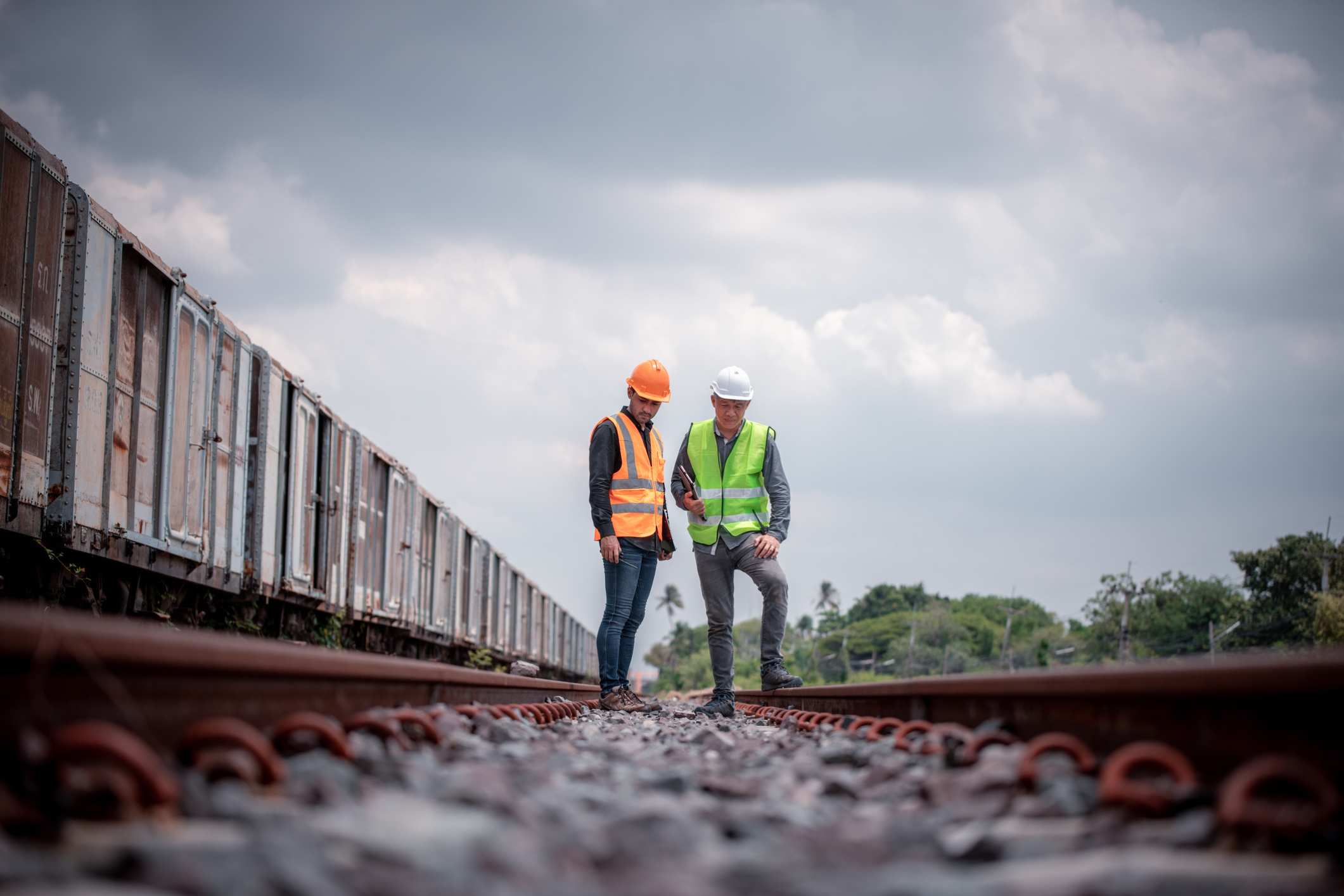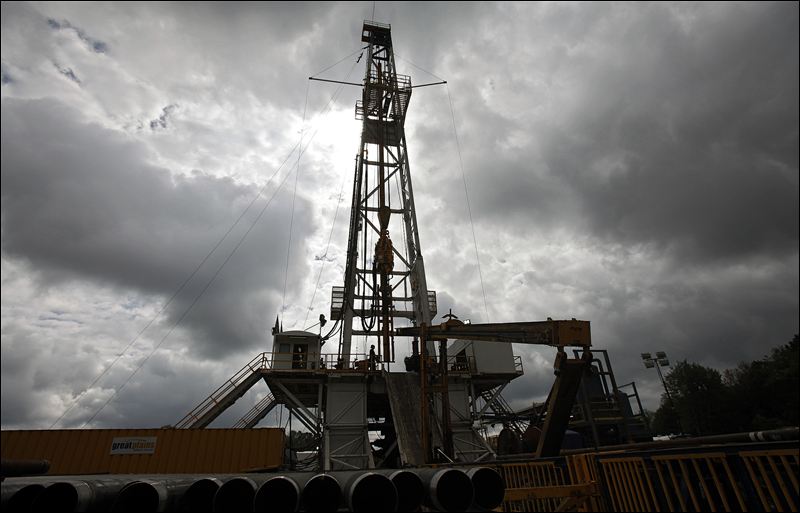SILICA DUST EXPOSURE
Railroad Silica Exposure Lawsuits: What Affected Workers Need to Know
One of the most serious hazards for certain workers at rail yards is respirable crystalline silica — microscopic dust produced when rock, concrete, ballast, or other silica-bearing materials are cut, crushed, or disturbed. Long-term inhalation of silica dust can cause silicosis, a progressive and sometimes disabling lung disease, and is linked to chronic obstructive pulmonary disease (COPD), lung cancer, kidney disease, and other conditions. When silica exposure is traceable to railroad operations, workers and their families may have legal options to pursue compensation.
When silica exposure occurs at rail yards, there are a couple of different legal claims available (including FELA). Our experienced railroad cancer lawyers can assist you in building a case and seeking a rightful settlement.
How railroad workers are exposed to silica
Railroad employees can encounter respirable silica in several common scenarios. Track construction and maintenance disturb ballast (the crushed rock beneath tracks), releasing fine dust. Cutting, grinding, or drilling concrete ties and panels generates silica aerosols. Abrasive blasting, sanding operations, and demolition activities using silica-containing materials also create high concentrations of airborne particles.
Even routine tasks near crushing or transfer equipment, or working in enclosed areas without adequate ventilation, can result in harmful exposures over time.
Exposure risk increases when employers fail to use engineering controls, do not provide proper respiratory protection, or lack monitoring and training. Because silica-related diseases often develop slowly, workers may not realize the connection between job duties and health problems until years after the exposure began.
Legal claims available to railroad workers
Railroad workers who develop silicosis or other silica-related illnesses have several potential legal pathways:
-
Federal Employers’ Liability Act (FELA). FELA is the primary remedy for railroad employees injured due to employer negligence. Unlike workers’ compensation, FELA allows recovery for medical expenses, lost wages, loss of earning capacity, pain and suffering, and wrongful death. To prevail under FELA, a claimant must show that the railroad’s negligence — such as failing to control silica dust, provide protective equipment, or warn workers — was a contributing cause of the injury.
-
Workers’ compensation. Some workers pursue state workers’ comp benefits for medical care and partial wage replacement. Workers’ comp generally provides quicker relief but typically bars suing the employer in tort. However, FELA claims remain available for railroad employees and often provide broader damages.
-
Third-party claims. If exposure resulted from defective equipment, unsafe materials provided by vendors, or negligent contractors, injured workers can pursue claims against those third parties in addition to or instead of employer-based claims.
-
Class actions and mass-tort litigation. When systemic exposures affect large groups of workers, coordinated litigation or multidistrict actions may arise, consolidating discovery and creating settlement avenues.
Does Ballast Dust Cause Cancer?
Ballast rock with high concentrations of crystalline silica and ballast dust exposure have been linked to silicosis, a serious lung condition that can result in death. Acute silicosis may develop in a few weeks to several years after initial exposure, and the disease is usually fatal within a year of diagnosis. Chest x-ray abnormalities usually appear within 5-10 years of workers who develop chronic silicosis.
There are several high-risk silica dust exposure railroad jobs involving track repair and track maintenance. Many trackmen and maintenance of way workers operate machines that easily disturb railroad ballast rock, potentially creating toxic clouds of silica dust.
Many of the older rail lines have used granite as ballast rock, much of which contains some amount of crystalline silica. As a result, many maintenance of way staff have been diagnosed with silicosis and other occupational lung diseases.
According to the Occupational Safety and Health Administration, trackmen and conductors may inhale silicates when using sand to assist in braking. The silicates become so tiny that they can penetrate a person’s lung cells upon inhalation.
Maintenance of way employees are tasked with building and maintaining track and deal with daily exposures to ballast dust and silica. Years of exposure can lead to silicosis and other diseases. Railroad ballast dust is likely to contain respirable crystalline silica (RCS). Railroad ballast is made from granite, quartzite, limestone, dolomite, or trap rock.
Some railroads provided paper dust masks to track workers starting in the 1980s but they did little to stop the impact of the fine ballast dust that was inhaled.
Joe Lyon is a highly-rated workplace injury lawyer and railroad cancer attorney investigating silica injury lawsuits and representing injured plaintiffs nationwide.
The Lyon Firm works with OSHA experts, construction site engineers, and vocational experts to investigate and determine whether poor management, safety violations, worker negligence or defective equipment caused an injury.

Is Fracking Linked to Silica Exposure?
Silica dust exposure is a serious threat to almost two million workers in the United States, according to the U.S. Occupational Safety and Health Administration (OSHA). Safety experts have identified more than 100,000 workers in high-risk jobs, primarily in the railroad, construction, fracking, mining and basic materials industries that may develop silicosis.
According to the U.S. Occupational Safety & Health Administration (OSHA), up to two million American workers are exposed to breathable silica toxins in a variety of industries and occupations. Silica dust, when inhaled by employees at the workplace, can cause very serious health disorders and diseases, including silicosis, lung cancer, silicosis, pulmonary fibrosis, autoimmune disorders, and other adverse health outcomes.
Workers may develop silicosis by breathing very small silica particles into the lungs. Silicosis, an irreversible lung disease, is most closely associated with occupational exposure to ballast rock and silica dust.
Railroad, construction workers and those working in fracking operations have developed silicosis and other respiratory diseases from inhaling silica dust and exposure to other toxins at the workplace.
The National Institute for Occupational Safety and Health (NIOSH) has published studies that show fracking workers are likely exposed to high levels of silica in the dust surrounding work sites, which may lead to permanent lung damage, silicosis and lung cancer.
The fracking process endangers workers when sand is delivered and loaded into sand movers, transferred by conveyor belts and blended with other fracking fluids prior to injection. Transporting and moving silica sand by movers and transfer belts can release dusts containing silica into the air and exposing workers if they breathe the dust into their lungs.
When oil and gas companies operate in America and the nearby environment ends up contaminated and damaged, surrounding land and home owners can expect to see their property values drop significantly.
Large energy corporations, with hundreds of hydraulic fracturing (Fracking) sites, are responsible for thousands of environmental infractions each year, causing millions of dollars in damages to properties nationwide.
According to a study by the Wall Street Journal, there are over one million active oil and gas wells in the United States, and more than 15 million Americans now live within a mile of many of them.
Toxic chemical leaks, oil spills, groundwater contamination, soil contamination, unsightly drilling equipment and noise pollution due to fracking activity account for the majority of property value loss claims.
Realtors around the country note that buyers are very hesitant to purchase homes near fracking sites. However, oil and gas companies are not taking responsibility for damages to property unless lawsuits are filed against them.
It is unfortunate that legal action is necessary, but not surprising given that the large energy corporations responsible are placing profit before environmental concerns. Any property owner with real estate negatively affected by fracking activities may have a claim against regional businesses.
Joe Lyon is a highly-rated fracking contamination lawyer, representing plaintiffs nationwide in a wide variety of civil litigation claims against large corporations.
NIOSH has identified the primary sources of silica dust exposure during fracking operations:
- Dust ejected from access ports on top of the sand movers during refilling operations while the machines are running
- Dust ejected through open side fill ports on the sand movers
- Dust generated by on-site vehicle traffic
- Dust released from the transfer belt
- Dust created as sand drops into blender hoppers
- Dust released between the sand mover and the blender
- Dust released from top of the end of a sand transfer belt
CONTACT THE LYON FIRM TODAY
Please complete the form below for a FREE consultation.
Who is at the Highest Silicosis Risk?
- Drillers
- Assistant drillers
- Floor hands
- Pump operators
- Pipefitters
- Maintenance staff
- Painters
- Machine operators
- Lease hands
- Derrick hands
- Motor hands
- Roughnecks
- Crane and truck drivers
- Foremen
- Well testers
- Field Engineers
- Railroad track maintenance crews
- Maintenance of way workers
Silica Dust Health Hazards
Crystalline silica is a mineral common in sand, and rocks like sandstone and granite. When rocks, clay bricks, concrete, and tiles are cut and dust fills the air, and workers are not equipped with proper safety equipment, illness is likely to develop.
Silica is produced when these materials are broken or drilled. As early as 1997, the International Agency for Research on Cancer (IARC) classified Crystalline Silica as a human carcinogen.
Silica is classified as a human carcinogen and is the cause of silicosis, a fatal lung disease. Silica dust gets trapped in the lungs and leads to scarring. Severe scarring and the stiffening of the lung makes it difficult to breathe. Over time, lung capacity will decrease. Exposure to silica dust has been associated with the following:
- Lung cancer
- Silicosis
- Scleroderma
- Chronic airway obstruction
- Chronic bronchitis
- Pulmonary Fibrosis
Silicosis Symptoms & Treatment
Silicosis symptoms may appear a few weeks or years after initial silica dust exposure. The scarring of lungs is like to produce a persistent cough as well as other respiratory symptoms. The three types of silicosis include:
- Chronic Silicosis—develops 10 to 30 years after exposure and affects the upper lungs. Patients may have trouble breathing, and the diseases may resemble chronic obstructive pulmonary disease (COPD). Chronic silicosis is often difficult to differentiate between simple silicosis, chronic bronchitis and emphysema. Radiography is used to diagnose the condition.
- Accelerated Silicosis—occurs after exposure to a large amount of silica in a short amount of time. Symptoms include inflammation and scarring that progress faster than in chronic silicosis.
- Acute Silicosis—high-level and massive exposure to silica dust in unregulated environments lead to acute silicosis. The lungs may become inflamed and filled with fluid. Patients can experience severe shortness of breath, cough, fever, weight loss and low blood oxygen levels.
What is Crystalline Silica?
Crystalline silica is a natural component of soil, sand, granite, and other common minerals. Forms of crystalline silica include quartz, cristobalite and tridymite. Almost all forms of silica can be broken into particle dust, and are likely to become respirable-sized particles during workplace activities such as chipping, cutting, drilling, or grinding objects that contain crystalline silica.
There are up to 100,000 American workers in silica-related high risk jobs such as abrasive blasting, foundry work, automotive work, construction, stonecutting, rock drilling, quarry work, tunneling, glass manufacturing and fracking.
Common Silica Exposure Industries
- Mining—coal and hard rock mining operations
- Fracking
- Construction
- Tunnel building
- Masonry
- Sandblasting
- Glass manufacturing
- Ceramic production
- Steel plants
- Quarrying
- Stone cutting
- Railroad – impacting anyone disturbing ballast dust, clearing tracks and ties, primarily for maintenance of way workers
Symptoms of Silica-Related Disease
The most common sign of heavy silica dust exposure is problems associated with breathing. Inhaling silica dust damages the lungs, increases the risk of lung infections, and may lead to heart failure. Silica may also cause lung disease and cancer with chronic occupational exposure.
Chronic silicosis, the most common type of silicosis, occurs after 15 or more years of exposure to respirable silica. Symptoms associated with chronic silicosis may include shortness of breath, fatigue, chest pain, or respiratory failure.
Acute silicosis occurs after a few months or a couple years following exposure to high concentrations of silica dust. Symptoms of acute silicosis include disabling shortness of breath, weakness, and weight loss, and may quickly lead to death.
Preventing Silica Dust Exposure
Silicosis cannot be treated, so it is essential that employers and workers at occupational risk work to prevent any possible silica dust exposure. Employers can take the following measures to ensure the safety of employees at the workplace:
- Maximize dry dust collection
- Enclose dust collection areas
- Use proper dust control equipment
- Properly maintain dry dust collectors
- Change collection filters according to equipment manuals
- Maximize wet suppression (wet drilling) methods
- Maintain and clean enclosed equipment cabs
- Replace torn or missing cab seals
- Keep the cab door closed when drilling
- Change air filters frequently
- Avoid any visible cloud of dust
- Position drills upwind when possible
- Use a respirator according to OSHA guidelines
Silica Exposure Lawsuits
It only takes a small amount of silica dust to create a health hazard. According to the Occupational Safety and Health Administration, inhaling silica dust can lead to a debilitating and fatal respiratory disease and numerous other health conditions and cancers. OSHA strictly enforces regulations that aim to protect workers from silica dust exposure.
Yet, more than 250 workers die from silicosis every year. Negligent employers may be held liable for injuries that are considered preventable.
The Lyon Firm works to protect workers in every industrial capacity and represents injured railroad workers and other plaintiffs nationwide when negligent employers fail to protect employees, and fail to adhere to basic OSHA safety regulations.
What evidence is required to build a strong silica exposure case
Proving a silica exposure lawsuit usually requires both medical and occupational evidence:
-
Medical proof: Clear diagnoses from pulmonologists or occupational medicine physicians showing silicosis, accelerated silicosis, COPD, or other silica-related conditions. Pulmonary function tests, imaging (CT scans), biopsy results, and medical histories are essential.
-
Exposure history: Detailed work records demonstrating job duties, tasks, worksites, and duration of exposure. Pay stubs, timecards, job descriptions, training records, and co-worker statements help establish the timeline.
-
Industrial hygiene data: Air monitoring results, safety reports, hazard assessments, and company training or safety protocols (or the lack thereof). Expert industrial hygienists can reconstruct exposure levels when monitoring was never performed.
-
Company documents: Internal memos, maintenance logs, purchase orders for silica-containing materials, and safety bulletins can show employer knowledge and the degree of negligence.
-
Expert testimony: Toxicologists, pulmonologists, and industrial hygienists translate the technical proof into a causal link between workplace silica exposure and the diagnosed disease.
Because FELA and toxic-exposure lawsuits center on causation and employer negligence, robust documentation and expert analysis are crucial.
Potential compensation
Compensation varies with the severity of illness and the type of claim. Under FELA, recoverable damages commonly include payment for past and future medical care, reimbursement of lost wages and lost earning capacity, non-economic damages for pain and suffering, and funeral expenses in wrongful death cases. Settlements and verdicts depend on proof of exposure, the worker’s age and earning potential, and the strength of negligence evidence.
Statutes of limitation and timing
Time limits to file claims differ by state and by the type of lawsuit. For many occupational diseases, the clock begins when the worker discovers, or reasonably should have discovered, the injury and its link to employment. Because silica diseases can take years to manifest, it is essential to consult counsel early to preserve evidence and to avoid missing filing deadlines.
Steps to take if you suspect silica-related illness
-
Seek immediate medical evaluation from a pulmonologist or occupational medicine specialist. Early documentation helps both health and legal claims.
-
Preserve employment records, safety training materials, and any correspondence about job duties or protective equipment.
-
File for workers’ compensation benefits if eligible, to secure medical care and wage benefits quickly.
-
Contact an experienced railroad or toxic exposure attorney who understands FELA and silica litigation. A lawyer can coordinate medical experts, review exposure evidence, and advise on suing the railroad or third parties.
-
Avoid destroying relevant documents and refrain from posting detailed medical information publicly.

Why specialized legal help matters
Silica exposure lawsuits require intertwining medical science, industrial hygiene, and federal railroad law. A specialized attorney familiar with FELA and occupational disease litigation can identify responsible parties, retain appropriate experts, and build the causal case needed for success. These cases often involve complex discovery against large employers with deep legal resources — expertise and persistence are critical.
CONTACT THE LYON FIRM TODAY
Railroad Silica Injury FAQs
Yes. Railroad employees can pursue claims under FELA when employer negligence contributed to silica exposure and illness. Workers’ compensation remains an option for medical care and partial wage replacement.
It depends. Chronic silicosis commonly develops after years of lower exposures; accelerated or acute silicosis can develop within months to a few years following high exposures.
Contractors, temporary workers, and even visitors may have legal rights against employers, contractors, or third-party vendors, depending on the circumstances.
If you or a family member has been diagnosed with silicosis or another silica-related disease and you worked on or near railroad operations, consult an attorney experienced with FELA and occupational exposure claims. Early legal and medical action preserves evidence and strengthens your ability to recover the compensation you need for care, lost wages, and long-term security.
-
-
Answer a few general questions.
-
A member of our legal team will review your case.
-
We will determine, together with you, what makes sense for the next step for you and your family to take.
-
